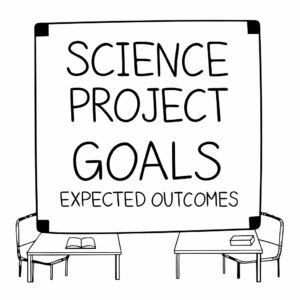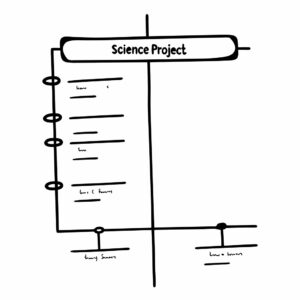Question More, Action Knowledge.
Remember, at QMAK, we don’t just teach; we empower. We don’t just inform; we inspire. We don’t just question; we act. Become a Gold Member, and let’s unlock your child’s full potential, one question at a time.
By the end of this lesson, students will:
Understand the importance of simplifying complex decisions.
Learn techniques to break down big decisions into smaller, manageable parts.
Recognize how simplification aids in clearer thinking and better decision-making.
Apply problem-solving strategies to real-life complex scenarios.

Let me show you something interesting that might seem overwhelming at first.
Look at this puzzle. It seems pretty complicated, right? If you tried to solve it all at once, it might feel impossible. But what if we broke it down into smaller pieces?
Notice how I’ve divided the puzzle into four sections. Suddenly, each part looks more manageable, doesn’t it? Instead of one big, overwhelming puzzle, we now have four smaller puzzles that we can tackle one at a time.
This is exactly how we can handle big decisions in our lives. When we’re faced with a complicated choice, trying to figure it all out at once can feel like looking at this whole puzzle and not knowing where to start.
Let me give you an example: Imagine you’re trying to decide what to do for your upcoming school project. You might feel overwhelmed thinking about:
That’s a lot to think about all at once! But what if we broke it down into smaller decisions?
See how each small decision is easier to make than trying to figure out everything at once?
What’s a big decision you’re facing right now? Let’s try breaking it down together into smaller, more manageable pieces.
Teaching Note: This opening activity establishes the core concept that complex problems become more manageable when broken down into smaller parts, setting up the more detailed exploration to follow.
Let me tell you a story about Maya and her “elephant.” Maya was chosen to organize the school’s first-ever student talent showcase. When the principal told her she’d be in charge, Maya felt like she’d been asked to eat an elephant!
She had to:
Maya went home that day feeling completely overwhelmed. “I can’t do this,” she told her older sister, Lily. “It’s too big. There’s too much to handle!”
Lily smiled and said, “You know what Mom always says about eating an elephant?”
Maya looked confused. “What? We don’t eat elephants!”
“It’s just a saying,” Lily explained. “When you have a huge task that seems impossible, remember: you eat an elephant one bite at a time. You don’t try to swallow it whole!”
“But what does that mean?” Maya asked.
“It means you break the big task into smaller pieces,” Lily said. “Instead of thinking about the WHOLE talent show at once, think about just one small part you can do today.”
Maya thought for a moment. “Well… I guess I could start by making a list of students I know who might want to perform.”
“Perfect!” Lily said. “That’s your first bite. Tomorrow you can take another bite by talking to those students. The next day, another bite by checking when the auditorium is available.”

Day by day, Maya took one small “bite” of her elephant:
Monday: Made a list of potential performers
Tuesday: Talked to five students about participating
Wednesday: Checked auditorium availability
Thursday: Created a simple poster design
Friday: Started planning the program order
Before she knew it, Maya had organized the whole talent show! When students and teachers praised her for handling such a big job, she smiled and shared her secret: “I just took it one bite at a time.”
What do you think about Maya’s approach? Have you ever faced an “elephant” in your life – something that seemed way too big to handle? How could you break it down into “bites”?
Remember: No matter how big the elephant, you never have to eat it all at once. You just need to figure out where to take the first bite.
Teaching Note: This story helps students understand that even the most daunting tasks become manageable when broken down into smaller steps. The metaphor of eating an elephant is memorable and can be referenced throughout the course when discussing complex decisions.
You know how sometimes a decision feels so big it’s like trying to solve a thousand-piece puzzle all at once? Today we’re going to learn some clever tricks to make those big decisions feel more like putting together a 4-piece puzzle!
**Why Make Big Decisions Smaller?**
Think about cleaning your room. If you look at the whole messy room, it feels overwhelming. But if you think “I’ll just start with picking up the clothes,” it’s much easier! The same idea works for decisions.
Let’s learn some simple but powerful ways to break down big decisions:
1. The Break-It-Down Method
Imagine you’re deciding what high school clubs to join. Instead of trying to decide everything at once, break it into smaller questions:
2. The What-Matters-Most Method
When facing a big decision, list what’s important to you. Like choosing a new hobby:
3. The Goal-Setting Method
Before diving into the decision, ask yourself:
4. The Picture-It Method
Sometimes drawing your decision helps! You can make:
5. The Detective Method
Gather clues about your decision:
Let’s practice with a real example: “Choosing a Science Fair Project“
Break It Down:
1. What subjects interest me?
2. What materials do I need?
3. How much time will it take?
4. Do I need help from anyone?

What Matters Most:
– Learning something new
– Having fun
– Getting a good grade
– Staying within budget

Goals:
– Create something interesting
– Understand the science
– Present it clearly

Picture It:
– Make a list of possible topics
– Draw a timeline
– Create a materials checklist

Gather Info:
– Look at past projects
– Ask teacher for advice
– Check what materials are available

See how a big decision becomes clearer when we break it down this way? What big decision are you facing that we could break down together?
Teaching Note: Encourage students to practice these techniques with their own decisions, starting with smaller ones to build confidence before tackling bigger choices.
Let’s practice making big decisions smaller and more manageable. We’ll look at some challenging situations and use our simplification tools to handle them.
Scenario 1: Planning Your Dream Birthday Party
Imagine you’re in charge of planning your own birthday celebration. There’s so much to think about!
Let’s break it down together:
Now, let’s tackle each part with questions:



Scenario 2: Choosing After-School Activities
You can join two activities this year, but there are five you’re interested in. How do we choose?
Break it down:
Let’s make a simple chart together to compare your options!


Scenario 3: Room Makeover
Your parents say you can redesign your room, but you feel overwhelmed by all the choices.
Steps to simplify:


For each scenario, let’s:
1. Draw out our plan
2. List steps in order
3. Note what information we need
4. Identify who can help
Which scenario feels most like something you’re dealing with? Let’s break down your real situation using these same tools!
Teaching Note: Help students apply these breakdown techniques to their own current decisions or challenges, making the learning immediately practical and relevant.
Today we learned something super powerful – how to take big, overwhelming decisions and break them down into smaller, manageable pieces. Remember Maya and her talent show? She showed us that even the biggest “elephants” can be handled one bite at a time!
Here’s what we discovered:
– Big decisions feel less scary when we break them down
– Small steps lead to big accomplishments
– Having a plan makes everything clearer
– It’s okay to take things one piece at a time
Over the next week, I have a special mission for you. Pick one “big thing” in your life – maybe a project you’ve been putting off, a decision you need to make, or a goal you want to achieve. Then:
1. Break it into tiny pieces
2. Put the pieces in order
3. Tackle just one piece each day
4. Keep track of your progress
Write about your experience:
“Today I broke down my big task of _______. The first small step I took was _______. It felt _______ to make progress on something that seemed so big before.”

When we meet next time, we’ll learn how to compare different choices to find the best solution. Bring your notes about breaking down your big task – I’d love to hear how making it smaller helped make it more manageable!
Remember: You don’t have to climb the whole mountain today. Just focus on the next step in front of you.
Your Toolkit for Breaking Down Big Decisions:
– The Break-It-Down Method
– The What-Matters-Most Method
– The Goal-Setting Method
– The Picture-It Method
– The Detective Method
What was your biggest “aha moment” today about making big decisions simpler? Which of these tools do you think you’ll use first?
Teaching Note: This wrap-up reinforces the key concepts while encouraging immediate practical application. The take-home challenge helps students build confidence in using these techniques independently.
Verse 1:
When the task looks mountain high
And you don’t know where to try
Think of Maya’s talent show
Breaking down the way to go
Little steps day after day
Light the path and lead the way
Pre-Chorus:
Take one small bite
(It’s all you need)
Make the big things
(Come piece by piece)
Chorus:
Break it down, step by step
Like a puzzle coming clear
Tackle one piece at a time
Till the path appears
Mountains turn to molehills
When you know the way
Taking one small bite
Is all you need today
Verse 2:
Draw your maps and make your lists
Sort the pieces that exist
What matters most? Where to start?
Keep it simple, use your heart
Every journey starts somewhere
With one step and then you’re there
(Pre-Chorus)
(Chorus)
Bridge:
Picture it, plan it through
Set your goals up front
Like a detective finding clues
Take it one small bite
One clear step at a time
(Chorus)
Outro:
No matter how big it seems
The secret stays the same
One small bite at a time
Makes mountains turn to plains
Remember, at QMAK, we don’t just teach; we empower. We don’t just inform; we inspire. We don’t just question; we act. Become a Gold Member, and let’s unlock your child’s full potential, one question at a time.